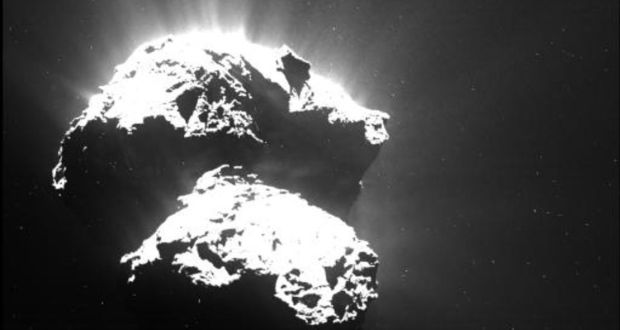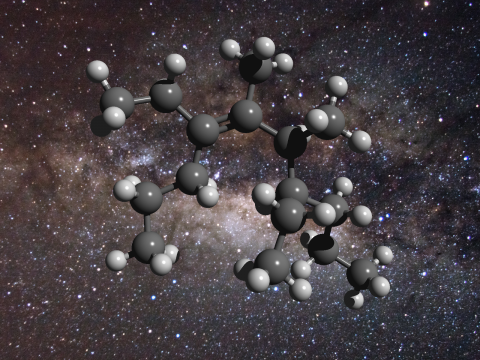An accurate refinement of the quality of the data on the surface composition of the nucleus of the comet 67P Churyumov Gerasimenko collected by the Italian spectrometer VIRTIS, on board the European space mission Rosetta, has allowed to identify, the first time for a comet, clear traces of aliphatic organic compounds, chains of carbon and hydrogen atoms. The distribution and type of materials identified thanks to VIRTIS reinforces the scenario in which comets and asteroids of the outer Solar System may have acquired the organic material that we now observe directly from the interstellar medium. The work, published in the latest issue of the journal Nature Astronomy, was led by a team of researchers from the National Institute of Astrophysics (INAF).

[ad_336]
The researchers revised several million spectra collected by VIRTIS (Visual, Infra-Red and Thermal Imaging Spectrometer) to obtain the most accurate infrared “vision” of the materials that are present on the surface of the nucleus of comet 67P. Under the scientific responsibility of the INAF Institute of Space Astrophysics and Planetology (with PI Fabrizio Capaccioni), the VIRTIS spectrometer was created by Leonardo di Campi Bisenzio (Florence) with the contribution of the Italian Space Agency (ASI). The work made it possible to highlight even the faintest traces of compounds that had hitherto remained in the shadows.
“Our complex and accurate analysis returns a composition of the comet similar to that observed in the interstellar medium” said Andrea Raponi, from INAF in Rome, the first author of the study. “Furthermore, the results reinforce the idea that the compositions of dynamically different objects such as comets and asteroids from the colder regions of the Solar System are similar.”
The revision of the data has thus made it possible to unequivocally discover the presence on the cometary nucleus of aliphatic compounds similar to simple organic compounds commonly present in bitumen, waxes, paraffins and fats. It is the first identification of this type of solid organic compounds on a cometary nucleus, and it is also the first remote identification, i.e. without the risk of altering the sample during its measurement.
[rand_post]
The core material thus appears to have characteristics similar to those of the diffuse interstellar medium and in some meteorites found on Earth, suggesting a continuity between these two environments, and providing an evolutionary link bridge: the organic compounds present in the interstellar medium that have been captured in the primordial cloud from which the Solar System was formed, they remain trapped in the colder and peripheral regions in small objects such as asteroids and comets. These celestial bodies have remained unchanged and, impacting on the planets, including the Earth, they may have provided the organic material at the base of the so-called “bricks of life”.
“We already knew that most of the organic compounds present on primordial Earth come from space» underlines Raponi. “Now, this study suggests that we can go further: the organic compounds of the Solar System are probably – and at least partially – inherited directly from the interstellar medium. This fascinating scenario therefore suggests that the same organic material may also be available for other planetary systems”.
